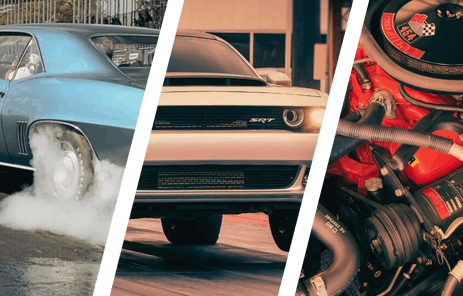Brazil is a country known for it’s sandy beaches, and sexy women, something it’s not known for is musclecars. Believe it or not Brazil has a few musclecars of it’s own, these were cars produced by the Big 3 exclusively for the Brazilian market. They were assembled in country and have become part of the local car culture. One of the most loved and well known of the Brazilian musclecars is the Chevy Opala SS.
The Chevy Opala SS was introduced in 1968 for the 1969 year, and it has all of the traits of an American musclecar. This includes a long wheel base, an aggressive grill, coke bottle styling, and mean lines. It strongly resembles it’s American cousins, right down to it’s racing striped paint job.
At first glance, under the hood the Opala SS may not seem like a true musclecar. It’s power plant is a 4,100 cc (250 cubic inch) Inline six engine. Despite not being a V-8 the 4100 spec’s are quite impressive. The engine was manufactured in Brazil, it’s bolted to a 4-speed transmission and it produces 169 Horsepower. It’s capable of 0-60 in 11 seconds and had a top speed of 108 MPH. Remember in the 60’s and 70’s Brazil was ruled by a military dictatorship, this meant GM had to sell what was practical for the nation.
The Opala SS was a popular race car throughout the 60’s and 70’s. It competed in drag races, road races and endurance races such as the 24 Hours of Interlagos. It was During the 24 Hours of Interlagos that a Brazilian chapter of the Chevy-Ford rivalry was formed. The rivalry began when the Opala SS stole the title away from the Ford Maverick in 1973. Like in the U.S., this Bowtie-Blue Oval rivalry continues to this day.
Today the Opala is popular among Brazilian hot rodders, many owners enjoy driving and racing these machines. Most owners keep the 4100 to keep the car original. Despite it’s small size the 4100 can be tuned for performance. Others have successfully done a 350 swap. If you do manage to get a hold of one of these cars yourself, an LS1 swap may be possible. What would be your engine of choice?

You might also like
SEMA 2025: Canton Debuts New 350Z LS swap Oil Pan
Canton Racing's new 350Z LS swap oil pan solves clearance issues for Z33 builders. It features track-ready baffling and a 6.5-quart capacity.







